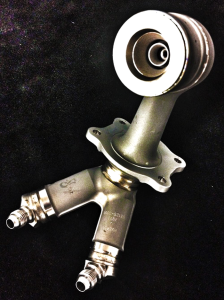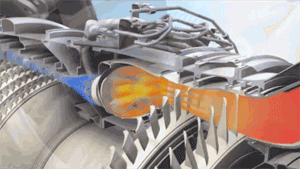GE has begun to enact its plans for the mass production of its 3D printed jet engine fuel nozzles. At the Farnborough Air Show, today, the company announced plans to outfit its Auburn, Alabama facility for the high volume 3D printing of its LEAP engine parts. Through the use of intricate, fuel-efficient design that can only be manufactured by 3D printing, the nozzles are predicted to cut fuel costs and carbon emissions by 15%.
GE Aviation plans to invest $50 million in its existing 300,000-square-foot facility and will begin the installation of its 3D printing machines at the end of this year. By the beginning of 2015, the company will start production on its 3D printed fuel nozzle to fulfill the 6,000 orders already made for the company’s LEAP engine.

With each engine made up of almost 20 fuel nozzles, GE will start the facility off with as many as 10 3D printers, but believes that it could house 50 by the end of 2015. As GE – along with its partner on the project, Snecma of France – believes that orders for the jet engines will increase, the additive manufacturing factory could go from employing 70 people, as it stands now, to 300 later in the decade.
Greg Morris, General Manager of Additive Technologies for GE, said at the announcement, “We spent years proving out this technology for a critical component in the heart of the engine, the combustion chamber. Now we are well positioned to apply this technology to other components in the same harsh environment which could prove to be game changing for future engine programs and designs.”

It is projected that the facility will go from producing 1,000 3D printed nozzles annually to 40,000 over the next five years. At the same time, the facility will continue its work producing super-alloy machined parts for jet engines, as well. Meanwhile, the company also plans to continue the development of new 3D printed designs, with all design taking place in its Aviation’s Additive Technology Center (ATC) in Cincinnati, Ohio. The ATC, which also tests the manufacturing readiness of 3D printed components, is expected to grow 300% in 2015.
In order to prepare for the anticipated work over to take place at the facility, GE is partnering with local universities and community colleges to create a pipeline from educational institutions into their 3D printing factory. In addition to the continuation of its Alabama Industrial Development Training (AIDT) and Southern Union State Community College (SUSCC) pre-employment training programs, the corporation will team with Auburn University and Tuskegee University to provide internships and co-op opportunities to students.
Actual use of the LEAP engines on Airbus A320neo, Boeing 737 MAX and COMAC (China) C919 aircraft will begin in 2016, but, alongside news of Google’s Project Ara smartphone, with 3D printed components, GE’s 3D printed full nozzles represent the beginnings of 3D printing used for mass production, rather than low-volume prototyping.


Leave A Comment